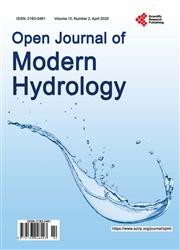The Impact of Nitrogen and Phosphorus Dynamics on the Kinneret Phytoplankton: II: Chlorophyta, Cyanophyta, Diatoms and Peridinium
引用次数: 4
Abstract
Lake Kinneret long-term data of the epilimnetic concentrations (ppm) and loads (tones) of the total Nitrogen (TN), total Phosphorus (TP), total inorganic Nitrogen (TIN), total Dissolved Phosphorus (TDP), Phytoplankton groups’ biomass, water level (WL) and Jordan River Discharge were analyzed. Previously collected data compiled aimed at an insight into the causative background for the modification of Phytoplankton community change. The study was carried out by searching for relations between algal groups’ densities and nutrient conditions in the Epilimnion by the use of statistical methods (Simple and Fractional Polynomial Regressions). The study is aimed at analyzing the relations between algal biomass and nutrient contents. It was found that Nitrogen decline and slight increase of phosphorus were followed by Peridinium (Photo 1) decline and biomass increase of non-peridinium algae. It is suggested that nitrogen supply for algal growth is mostly from external sources, and the reduction of nitrogen in the epilimnion was caused by external removal. Contrary to nitrogen, phosphorus sourcing is only partly external (dust deposition, drainage basin) and mostly internal through double channels: Microbial mineralization of bottom sediments and Peridinium cysts mediation. The resulted complexity of the Kinneret ecosystem structure is nitrogen limitation, and enhancement of Non-peridinium algal growth, mostly Cyanobacteria.氮磷动态对Kinneret浮游植物的影响:Ⅱ:叶绿素、蓝藻、硅藻和Peridinium
分析了Kinneret湖表层总氮(TN)、总磷(TP)、总无机氮(TIN)、总溶解磷(TDP)、浮游植物群落生物量、水位(WL)和约旦河流量的表层大气浓度(ppm)和负荷(吨)的长期数据。先前收集的数据旨在深入了解浮游植物群落变化的原因背景。本研究通过使用统计方法(简单多项式回归和分数多项式回归)寻找表层藻类种群密度与营养条件之间的关系。本研究旨在分析藻类生物量与营养成分之间的关系。研究发现,氮的减少和磷的轻微增加之后是Peridinium(图1)的减少和非Peridinium藻类的生物量的增加。结果表明,藻类生长的氮供应主要来自外部,表层水体中氮的减少是由外部去除引起的。与氮相反,磷的来源仅部分是外部的(灰尘沉积、流域),大部分是通过双重渠道内部的:底部沉积物的微生物矿化和Peridinium囊肿的介导。Kinneret生态系统结构的复杂性是氮的限制和非周藻(主要是蓝藻)生长的增强。
本文章由计算机程序翻译,如有差异,请以英文原文为准。
求助全文
约1分钟内获得全文
求助全文

 求助内容:
求助内容: 应助结果提醒方式:
应助结果提醒方式:


